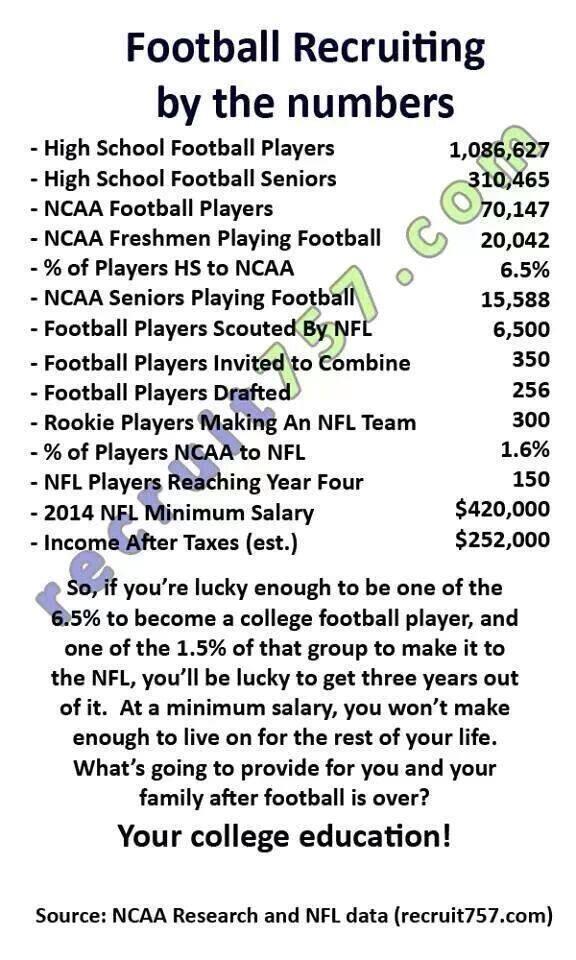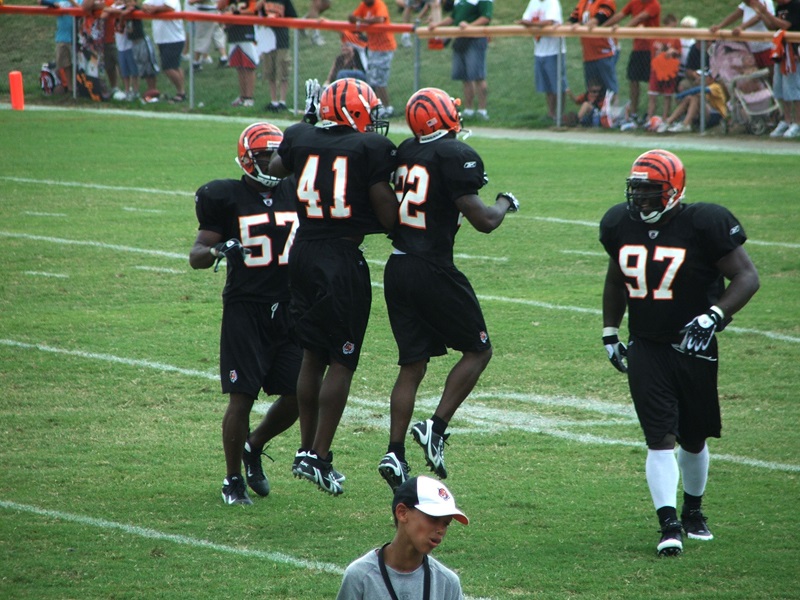[youtube=http://youtu.be/TJ1dTMsxM7Y]
Upside Down Strategy, Jeff Tedford, Ryan Riddle’s Draft Metrics, Kraken, and RSP Post-Draft Update.
What is Reads Listens Views?
If you’re new to the Rookie Scouting Portfolio blog, welcome. May is normally a lighter month for me on the blog due to the short turnaround time for the RSP Post-Draft and the magazine schedule at my day job. Otherwise, I post links on Fridays to content I’m saving for later consumption or pieces that I found compelling. You may not like everything listed here, but you’re bound to like something.
Listens/Views
[youtube=http://youtu.be/kbbKtcbVMDM]
I was a matriculate of this program. This is a fun composition from one of its students that sounds like the title.
Download the 2014 Rookie Scouting Portfolio + Post-Draft Update!
Friday’s are also my chance to thank you for reading my work, encourage you to follow the RSP blog, and download the Rookie Scouting Portfolio publication.
The 2014 Rookie Scouting Portfolio Post-Draft Add-On is ready for download. If you’re in a dynasty league, the combination of the 2014 RSP and the RSP Post-Draft will have you prepared for this year and beyond. Want details? Need details? I have ’em right here:
- 84 pages
- How to use the RSP and RSP-Post Draft together
- Overrated/Underrated
- Good/Bad post-draft fits
- UDFAs to watch
- Long-term dynasty waiver wire gems
- Strategic overview of 2014 rookie drafts
- Tiered Value Chart Cheat Sheet across all positions
- Post-Draft rankings analysis and commentary–including notes about impending contracts years of competition on the depth charts
- Average Draft Position (ADP) Data of 19 dynasty drafts
- RSP Ranking-to-ADP Value Data
- Raw Data Worksheets to continue calculating additional ADP data for future drafts
Hell, take a video tour of the 2013 post-draft to see what I mean:
[youtube=http://www.youtube.com/watch?v=T8f06wrsHVI&feature=share]
Seriously, this analysis is worth the price of the 2014 RSP package alone, but you get this as a part of your purchase with the 2014 RSP. Remember 10 percent of each sale is donated to Darkness to Light to prevent sexual abuse in communities across the United States. While that alone should get you to download the RSP package, do it because you will be blown away with the detail and insight of the analysis and content. It’s why the RSP has grown so much in the past nine years.
Best yet, 10 percent of each RSP sale is donated to Darkness to Light, a non-profit devoted to preventing and addressing sexual abuse through community training in schools, religious groups, and a variety of civic groups across the U.S.
Download the 2014 RSP and RSP Post-Draft here
In Case You Missed It/Coming Soon
- Bears RB Ka’Deem Carey: Substance Over Flash
- Upside Down Draft Strategy – Gut Check No.293 offers an introduction and analysis of the draft strategy that three high-stakes champs have used. BTW-Why you should subscribe to FBGs.
- A Trip to The Thrift Store – Gut Check No.292 takes a look at players I think are emerging, progressing, in crowded scenarios, and at a crossroads.
- The 2014 RSP Writers Project – I’m working on this now. It might take a couple of weeks, but it’s a different experiment that I think will be surprising and fun.
Reads (Football)
- NFL Draft War Room Stories – Russ Lande tells a few.
- New Rule: College Players Can Receive Compensation for On-Campus Summer Football Camps – Giddy-up! This story has legs and it’s not even at the first stretch on the track.
- 2014 Prospect Risk Analysis Metric – Ryan Riddle’s work–and he puts a lot of work into this.
- It’s Not Them, It’s You – Yes, I realize the draft is over. But do you realize you’re on a draft analysis site? If you missed it, Chris Brown’s piece on the top three QBs is dynamite.
- Kyle Watchtel’s Coaching Carousel Stops on Jeff Tedford– A look at the Bucs’ new offensive coordinator from a fantasy perspective.
Views
[youtube=http://youtu.be/DePFiF-nNoE]
H/T to RabidBuc.
Reads (Life In General)
- The ‘Miracle’ Berry That Could Replace Sugar – Miracle fruit contains a protein called miraculin that tastes sweet enough to replicate the effect of sugar.
- Blue Note turns 75 – Not the club in New York or Tokyo, but the record label based in Englewood Cliffs, New Jersey. Check out some of the music and articles on NPR–especially the Lou Donaldson & Lonnie Liston set where Donaldson talks a little trash about “pop-jazz” and 50 cent. Ironically, it’s their brand of “hard-bop” that actually led to some of this music he was trashing. Good music though.
- ‘Oh My Jesus!'” Shots Fired During NPR Interview in Chicago – An interview about gun violence is interrupted with gun violence.
- The $6800, 84-mpg Elio is Getting Closer – This three-wheel, two-seat car is getting closer to its production standard with reservation list sporting 17,000. It qualifies as a motorcycle for driving, but they’re shooting for a 5-star safety rating. I don’t know if that’s a reflection of the car or a reflection of the government. I hope it’s the car.
- A Series on the Koch Brothers – If you’re a conservative, you’re likely to look at this series in Mother Jones’ as a “hit-piece.” If you’re liberal, you’ll probably love it. If you’re a writer, you’ll probably judge it on the merits of the work. And if you’ve ever known anyone who was asked to sign a statement saying that you’ve never received welfare before one of their companies gives you a job, then you have a smidgeon of insight into them.
- God, The Devil, and ‘Hannibal’ -I’m hearing this NBC series based on Hannibal Lecter is good. I watched some clips on Hulu and was impressed.
- Intriguing Lime-Green Blobs Appear In The Andes Mountains. Are They Alive? – These “drops of lime sherbert” in the desert are about 2,000 years old.
- How Gun Extremists Target Women – These people give responsible gun owners a bad name. Some of them even harassed a Marine Veteran on Memorial Day.
Views
You’ve probably seen this, but if you haven’t it’s worth it. Cool, but not surprising. My cat did this to save a kitten from two dogs about 9-10 years ago.











